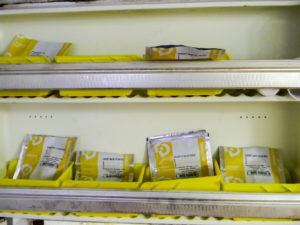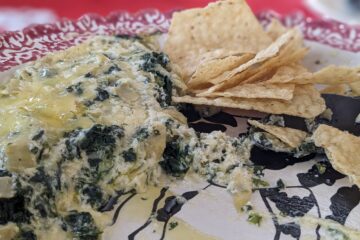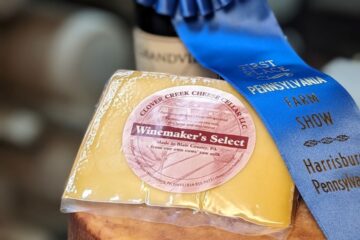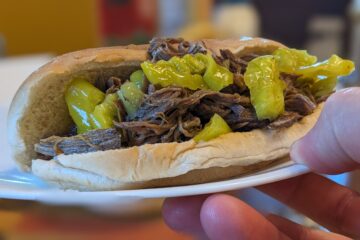Whenever we have a school tour we start with a question: are bacteria good or bad? Most kids say bad because they associate bacteria with washing dirt off their hands. However, anyone familiar with food preservation knows that there are good and bad bacteria. If you make wine, beer, kombucha, or yogurt, you are using bacteria to develop acid and preserve food for eating later. We do something similar to start the cheese-making process.
Once the morning milking is complete (learn about our milking process in the first post in the series), we measure the amount in the cheese vat and check the pH. A pH meter tells us the level of acidity in the milk and cheese. pH is a scale from 0-14. Seven is a neutral pH (distilled water). Lower values are acidic (the pH of lemon juice is around 2) and higher values are basic (the pH of bleach is around 12). Our milk starts out fairly neutral, with a pH of between 6 and 7. During the cheese-making process, we check the pH to monitor the acid development.

Cheese cultures are bacteria. They digest the lactose (sugar) in milk and produce lactic acid. We find some of these cultures naturally in our raw milk, but we also add them at the start of cheese making to get the process moving along. We purchase these additional cultures in foil packets, which contain a freeze-dried powder that looks like yeast. Some cheesemakers develop their own cultures from their milk, or they use whey or kefir. We have experimented by doing this with a few small batches. However, we haven’t made a whole batch using just native cultures yet.
Using the amount of milk in the vat, we calculate how much culture we should add. Dave and Anthony have written up recipes for each type of cheese that we make. The recipe tells our cheesemakers how much of each culture to add per 1000 pounds of milk. We weigh each culture out on a gram scale and then sprinkle them across the vat. We stir the cultures into the milk and then wait for a half-hour to an hour to allow the cultures to work before moving to the next step.
NEXT: Curds and Whey


